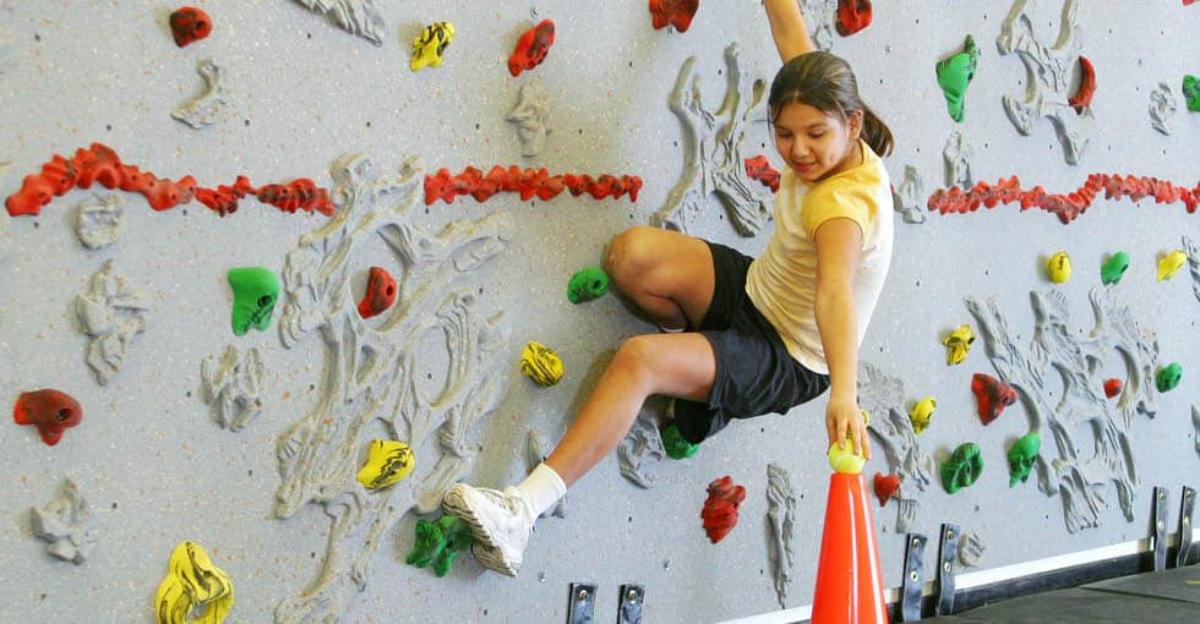Rock climbing can be a positive and powerful part of a high-quality physical education program. It is a very appealing activity that offers a welcome alternative to traditional team sports. In addition, climbing affects all three learning domains to offer many benefits to youth of all ages.
Elementary and middle schools typically have traverse, or horizontal, climbing walls in which students climb across the wall, from one end to the other, rather than up to the top. High schools typically have top-rope climbing walls which require special safety training and additional equipment. Regardless of which type of climbing wall a school has, the same benefits to students are reaped.
Physically, rock climbing is both an aerobic and anaerobic activity. It increases cardiovascular fitness, while simultaneously increasing muscle strength and endurance. When climbing, students are reaching for various hand and foot holds, requiring balance, coordination, flexibility and motor planning. Not only is it a fun, full-body workout, but also helps to meet National Standards and Grade Level Outcomes for K-12 Physical Education.
Cognitively, climbing requires problem solving, decision making, focus and concentration. Goal setting exercises can be conducted with a climbing wall, as well as many cross-curricular activities that integrate climbing with other subject areas to reinforce classroom learning. The brain is getting a workout equal to the body.
Rock climbing also impacts the affective domain. Students are participating in a positive risk taking activity that requires courage, self-confidence, self-reliance, patience, perseverance and self-control. Students are meeting challenges, overcoming fears and, in doing so, building their self-esteem. Climbing also provides opportunities to support others, cooperate and demonstrate leadership skills during team-building activities.
Climbing truly impacts the body, mind and spirit. It is no wonder it is increasingly becoming part of physical education programs across the country.







Leave a Reply